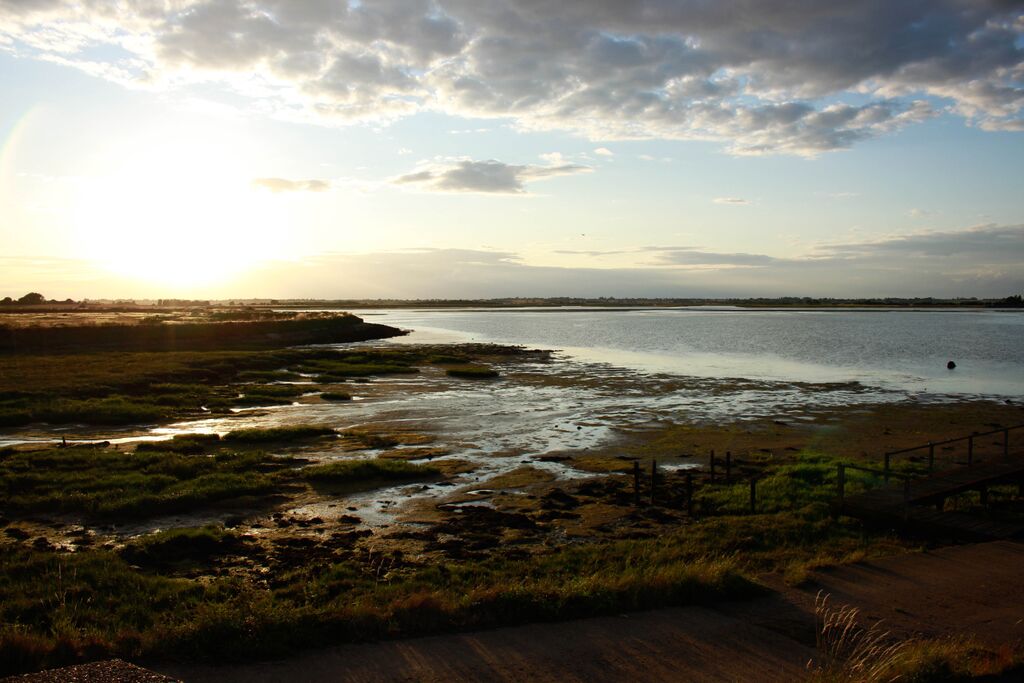One usually looks forward with optimism on the first day of the year. For us this year is based on work done from June 2017 onwards. The results of the 2017 harvest provided a blue print of what needs to be done to deliver success in 2018. Through autumn 2017 and right up to Christmas the plan developed as to how to harvest, process and market our sea buckthorn.
This coincided with successful acceptance of our application to put around 125 hectares of the farm into a new five year Countryside Stewardship (CS) scheme. This environmental scheme will extend and improve works that have been building bird breeding habitats on our farm over the past ten years. The security of this agreement means that we can budget for the design and development work of the harvesting machinery needed for 2018.
The land involved in the CS agreement lies behind the Naze cliffs at Walton on the Naze. The sea has been eroding these cliffs at a rate of between 1-1.5m per year. This year is critical because the cliffs have almost completely eroded away in front of our land. In 2008 and 2011 a clay bund was placed against the back of the cliffs to re-inforce them, but this is now almost gone. Over 2017 we have partnered with local government, the Environment Agency and Anglian Water to build a new wall to protect both our land and the Anglian Water Treatment works that both stand at risk from flooding. If the sea breaks through, our five year CS agreement and the land will be lost. Hopefully it will be a “happy new year” and 2018 will see this protection wall built – as it represents a risk to both the land involved and funding security for the sea buckthorn.
Developing the funding for the new harvesting equipment has involved making an application for LEADER funding. This is EU funding, distributed through the North Essex and Suffolk area to support rural business development. In 2013 and 2015 the farm was involved in two EU funding bids with European sea buckthorn partners. The amount of work is massive and often to tight deadlines. This LEADER application is no exception, but the process has real value in questioning ideas and developing a more robust business plan. The need for funding support for our harvesting equipment will allow our own funds to go further and allow them to progress the plant trials that we are planning to develop with NIAB East Malling Research over the next three years.
Having now grown our Siberian sea buckthorn we now need to quantify our methods and improve them so that the resultant crop has consistent quality. The branch cutting harvesting process is a novel system that requires plants to rejuvenate rapidly to produce new branches so we can harvest on a three year cycle. Branch rejuvenation will need the right foliar fertilisers and management to minimise plant stress that might bring on plant disease.
The unpredictability of weather is also a concern. Long dry periods may be a cause of berries being smaller than average and also impact on variable ripening times. We need to look at possible low level irrigation below harvest to prevent such weather extremes from becoming a regular problem.
Understanding which varieties are best suited to our climate and soils is crucial to developing these plants into a commercial crop of the future. Our organic management will need to identify which varieties respond to these management methods, which yield best and which have the qualities that match market needs.
All of these issues will take a minimum of three years to define, but once achieved we can progress the crop with confidence.
This is not to say that we will not be expanding planting this year. As we enter the market in 2018, we need to increase the size of our orchard for the future. It takes four years to bring plants to fruit. The current orchard has plants established annually from 2011 through to 2015 so yield will be increasing to a peak in 2021/22. Plants established in 2018 will build on the current 4000 plant stock and provide for a growing market through into the next decade.
Alongside new plants will come a specialist tractor and weeding cultivator to mechanise field work. Machinery will not be the only investment for 2018 as the potential of the 2018 crop will push our resources to the limit, so we will also be looking to recruit this year. Time is always a precious resource and ensuring we deliver our best crop will only come with attention to detail delivered by an expanding team.
So as January starts, it feels like 2018 is going to be a year to remember, and as I write this I wish everyone a happy, healthy and successful New Year for 2018.
David

